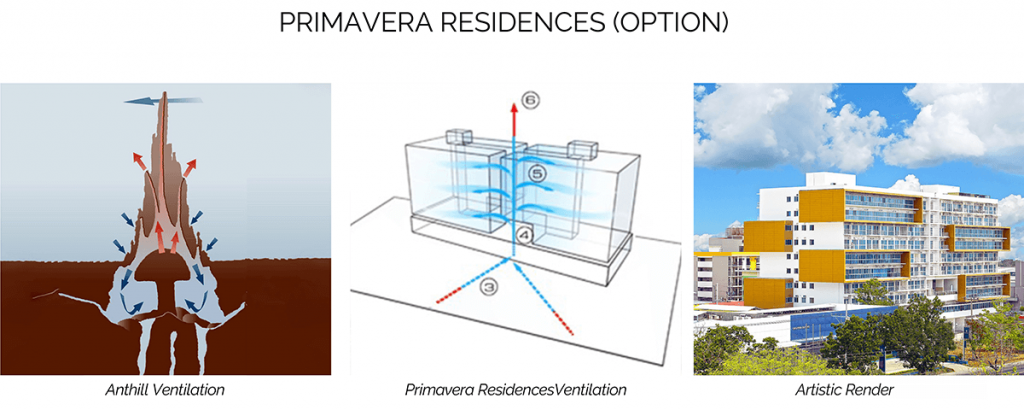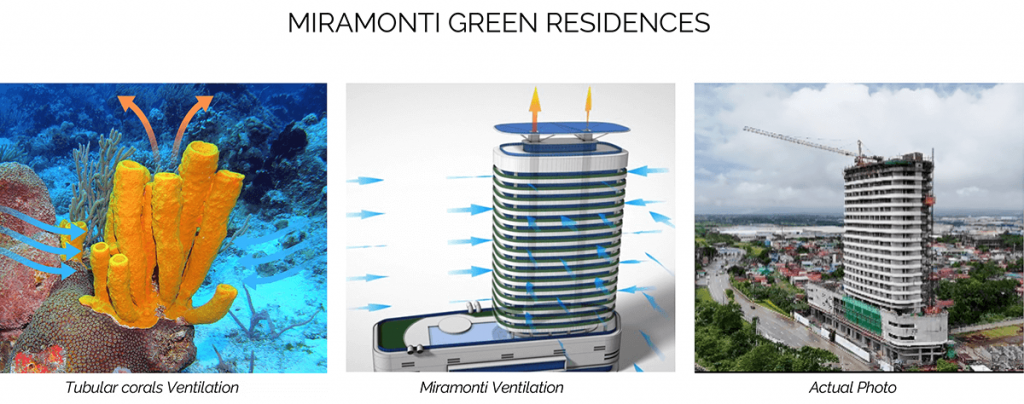In my previous column, we explored the concept of biophilia, or “love of nature” as an inspiration in designing modern buildings.
Design that brings the built environment closer to nature has been a guiding principle behind Italpinas Development Corp (IDC). In our buildings, primary importance is given to natural air and light in every space. We take pride in applying great precision and forethought in how we design the interplay of sunlight and ventilation.
My article also correlated biophilia with mental health, expounding on how “biophilic” design enhances the connection between humans and the natural environment, and how it provides numerous benefits for health, wellbeing, and sustainability.
Another guiding principle behind IDC’s work is biomimicry. What is the difference between biophilia and biomimicry? Biophilia is an emphasis on the occupant’s need for nature, and the assurance of closeness to nature through views, spaciousness, ventilation, and light. Biomimicry, on the other hand, is when the physical form of the building itself mimics physical forms found somewhere in nature.
It’s a bird, it’s a plane
We can see examples of this throughout the engineering world. It is no coincidence that airplanes are shaped like a bird with its wings extended to their maximum span. Their function, after all, is similar: achieving stability in long-distance flight. It is also no coincidence that the texture of Velcro feels like the barbs of a prickly plant. Their function, after all, is also similar: to adhere, whether as a fastener for man-made clothing, or merely as a sticky bur, which sticks to a passing animal and travels a distance before taking root elsewhere, furthering that species’ range of coverage.
Though it may seem strange at first to place all these examples under the same theme of biomimicry, it is only their size and scale that differ wildly, from a tiny flowering plant to an enormous aircraft. The thing that they all have in common, however, is that their mechanical function was inspired by a similar mechanical function in nature.
Such mechanical functions in nature can inspire architects and designers because the natural functions have their very own physical architecture and design that are the products of thousands of years of evolution and natural selection. In the natural world, there are endless examples of specialization that have resulted from this process that is as old as time. When we lengthen our historical memory by orders of magnitude, we can begin to see nature as the consummate designer, which is both deliberate, and also tested repeatedly by the replication of generations over thousands of years. Why else is the shape of a nautilus shell so structurally robust, given the delicacy of the actual material that it is made of?
Primavera Residences
In Italpinas, we apply these principles of biomimicry to our designs — past, present, and future. An example of this is our award-winning building in Cagayan de Oro, Primavera Residences. In spite of its sleek and contemporary style, this building actually has a passive mechanical function for the natural ventilation, which took inspiration from a termite mound. Termite mounds are literal hives of activity. Temperature control and ventilation are essential to the organisms within. They are also relatively large structures to their inhabiting organism, towering over the actual size of an ant or termite, in the same way that contemporary buildings tower over the size of its human inhabitants. One key feature that termite mounds have evolved over the millennia is a hollow structure that allows warm air to rise through it and exit from the top, creating sufficient negative pressure inside so that fresh air can enter through its porous walls.

In the case of Primavera Residences, each of the two buildings in this project has a central atrium, which allows warm air to rise naturally through the building. This enables each unit along its outer structure to draw fresh air in from the outdoors. This is called “passive” efficiency because no electricity is being used to give this effect. It is quietly ongoing 24 hours a day, fueled only by the natural tendency of warm air to rise upward. Although subtle and enforced only by the thoughtful design of the structure, this design feature has the effect of lessening each unit’s reliance on artificial air conditioning, improving the biophilic profile of each unit. Termite mounds are humble things, but they achieve elegant and profound solutions through their natural design. As our building was inspired by the same objective of natural ventilation, and similar mechanical functions, this is again an example of biomimicry at work.
Miramonti Green Residences
Another example of biomimicry in architectural design is our Miramonti Green Residences, the new condominium community that we are currently building in Santo Tomas, Batangas.

The shape of this building is inspired by the shape of tubular corals. This is not only a nod to the unparalleled marine biodiversity of the nearby Batangas shoreline, but also a mechanical design perfected by nature for structural rigidity. As each specimen of coral is built by tiny organisms, the result is a shape built up organically over time, which has undergone millenia of trial and error in order to achieve an optimum structure for durability. We took inspiration from this when designing the Miramonti Project, which currently features one tower, and is designed to be completed with three of them, like a majestic specimen of coral on a Philippine reef. In the case of the Miramonti buildings, their shape also facilitated the same natural ventilation that we achieved with the Primavera Residences project, as warmer air rises through the building, to be replaced laterally by fresh air from outside each unit.
With our team of engineers and architects in Batangas led by MJ Abillan, lead architect; and Melvin Ibabao, our construction manager, I am confident that Miramonti will be a world-class design and a landmark in the southern Tagalog region.
Verona Residences
In Cagayan de Oro City, IDC Homes’ award-winning Verona Residences, located in uptown CDO, is sold out. We are happy to announce that its successor will be built, this time in the Gusa area of downtown CDO. This new walk-up development will be tailored to different placements, different lifestyles, and different pricing to suit the budget of the consumers.
As already announced, it will be a 43,198-square-meter development which will entail an investment of P2.38 billion. These new developments will again be inspired and enhanced by biophilia and biomimicry, not just for aesthetics but for the enhancement of natural ventilation, lighting, and noise-pollution filters. We have also allotted more than 60-percent of the total buildable land area to green, public spaces and amenities such as swimming pool, park, playground, public transport parking, and sports court.
Biophilia and biomimicry are two different approaches to architecture that take inspiration from nature. They share a common goal of creating sustainable, healthy, and green environments. By applying both in our projects, we can create buildings that are not only beautiful and functional but also sustainable and resilient.
* * *
I would like to invite you to Like, Follow and Share my online spaces and content on Facebook and LinkedIn (Architect Romolo V. Nati) and on Twitter (@romolonati)
